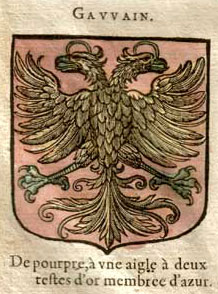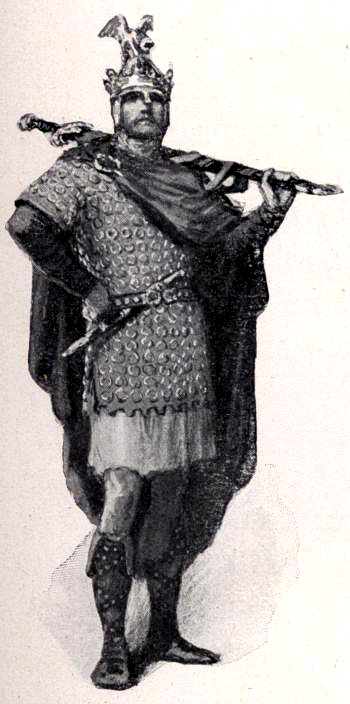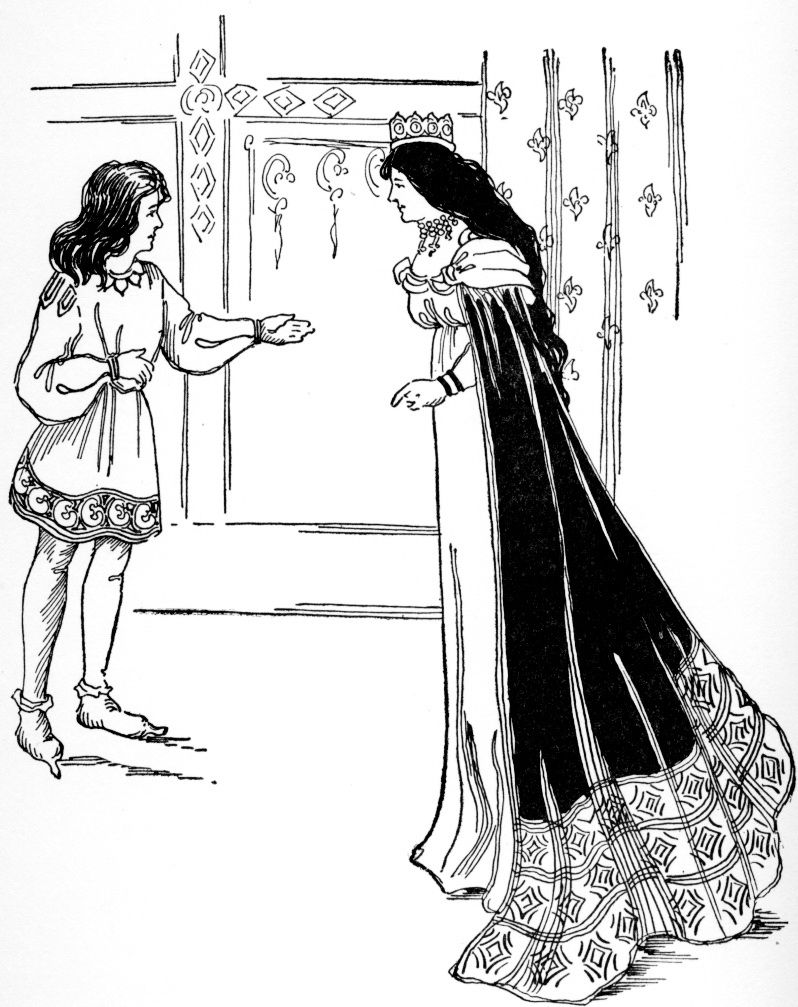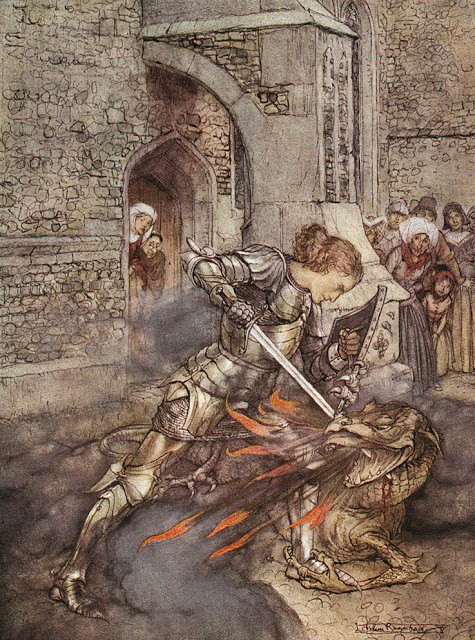|
Mordred
Mordred or Modred (; Welsh: ''Medraut'' or ''Medrawt'') is a figure who is variously portrayed in the legend of King Arthur. The earliest known mention of a possibly historical Medraut is in the Welsh chronicle ''Annales Cambriae'', wherein he and Arthur are ambiguously associated with the Battle of Camlann in a brief entry for the year 537. Medraut's figure seemed to have been regarded positively in the early Welsh tradition and may have been related to that of Arthur's son. As Modredus, Mordred was depicted as Arthur's traitorous nephew and a legitimate son of King Lot in Geoffrey of Monmouth's pseudo-historical work ''Historia Regum Britanniae'' which then served as the basis for the following evolution of the legend from the 12th century. Later variants most often characterised him as Arthur's villainous bastard son, born of an incestuous relationship with his half-sister, the queen of Lothian or Orkney named either Anna, Orcades, or Morgause. The accounts presented in t ... [...More Info...] [...Related Items...] OR: [Wikipedia] [Google] [Baidu] |
Guinevere
Guinevere ( ; cy, Gwenhwyfar ; br, Gwenivar, kw, Gwynnever), also often written in Modern English as Guenevere or Guenever, was, according to Arthurian legend, an early-medieval queen of Great Britain and the wife of King Arthur. First mentioned in popular literature in the early 12th century, nearly 700 years after the purported times of Arthur, Guinevere has since been portrayed as everything from a villainous and opportunistic traitor to a fatally flawed but noble and virtuous lady. Many records of the legend also feature the variably recounted story of her abduction and rescue as a major part of the tale. The earliest datable appearance of Guinevere is in Geoffrey of Monmouth's pseudo-historical British chronicle ''Historia Regum Britanniae'', in which she is seduced by Mordred during his ill-fated rebellion against Arthur. In a later medieval Arthurian romance tradition from France, a prominent story arc is the queen's tragic love affair with her husband's chief knight ... [...More Info...] [...Related Items...] OR: [Wikipedia] [Google] [Baidu] |
Gawain
Gawain (), also known in many other forms and spellings, is a character in Arthurian legend, in which he is King Arthur's nephew and a Knight of the Round Table. The prototype of Gawain is mentioned under the name Gwalchmei in the earliest Welsh sources. He has subsequently appeared in many Arthurian stories in Welsh, Latin, French, English, Scottish, Dutch, German, Spanish, and Italian, notably as the protagonist of the famous Middle English poem ''Sir Gawain and the Green Knight''. Other tales featuring Gawain as the central character include '' De Ortu Waluuanii'', ''Diu Crône'', '' Ywain and Gawain'', '' Golagros and Gawane'', '' Sir Gawain and the Carle of Carlisle'', '' L'âtre périlleux'', '' La Mule sans frein'', '' La Vengeance Raguidel'', '' Le Chevalier à l'épée'', '' The Awntyrs off Arthure'', '' The Greene Knight'', and '' The Weddynge of Syr Gawen and Dame Ragnell''. In Arthurian chivalric romance literature, Gawain is usually depicted as King Arthur's clo ... [...More Info...] [...Related Items...] OR: [Wikipedia] [Google] [Baidu] |
Battle Of Camlann
The Battle of Camlann ( cy, Gwaith Camlan or ''Brwydr Camlan'') is the legendary final battle of King Arthur, in which Arthur either died or was fatally wounded while fighting either with or against Mordred, who also perished. The original legend of Camlann, inspired by a purportedly historical event said to have taken place in the early 6th-century Britain, appears only in vague mentions found in several medieval Welsh texts dating since around the 10th century. The battle's much more detailed depictions have emerged since the 12th century, generally based on that of a catastrophic conflict described in the pseudo-chronicle ''Historia Regum Britanniae''. The further greatly embellished variants originate from the later French chivalric romance tradition, in which it became known as the Battle of Salisbury, and include the 15th-century telling in '' Le Morte d'Arthur'' that remains popular today. Etymology The name may derive from a Brittonic ''*Cambo-landa'' ("crooked/twisting ... [...More Info...] [...Related Items...] OR: [Wikipedia] [Google] [Baidu] |
King Arthur's Family
King Arthur's family grew throughout the centuries with King Arthur's legend. Many of the legendary members of this mythical king's family became leading characters of mythical tales in their own right. Medieval Welsh tradition In Welsh Arthurian pre-Galfridian tradition, meaning from before the time of Geoffrey of Monmouth's 12th-century ''Historia Regum Britanniae'' (''History of the Kings of Britain''), Arthur was granted numerous relations and family members. Several early Welsh sources are usually taken as indicative of Uther Pendragon being known as Arthur's father before Geoffrey wrote, with Arthur also being granted a brother ( Madog) and a nephew (Eliwlod) in these texts. Arthur also appears to have been assigned a sister in this material – Gwalchmei is named as his sister-son (nephew) in ''Culhwch and Olwen'', his mother being one Gwyar. ''Culhwch and Olwen'', the ''Vita Iltuti'' and the ''Brut Dingestow'' combine to suggest that Arthur's own mother was named Eigyr ... [...More Info...] [...Related Items...] OR: [Wikipedia] [Google] [Baidu] |
Morgause
The Queen of Orkney, today best known as Morgause and also known as Morgawse and other spellings and names, is a character in later Arthurian traditions. In some versions of the legend, including the seminal text ''Le Morte d'Arthur'', she is the mother of Gawain and Mordred, both key players in the story of King Arthur and his downfall. Mordred is the offspring of Arthur's accidental incest with Morgause, the king's estranged half-sister. She is furthermore a sister of Morgan le Fay and the wife of King Lot of Orkney, as well as the mother of Gareth, Agravain, and Gaheris, the last of whom murders her. Earlier counterparts The corresponding character of Arthur's sister in Geoffrey of Monmouth's 12th-century Latin chronicle ''Historia Regum Britanniae'' is named Anna, and is depicted as a daughter of Uther Pendragon and Igraine. In Wolfram von Eschenbach's ''Parzival'', Anna is replaced by Sangive, whom the poet Der Pleier calls Seife. They are usually cast in the role of Lo ... [...More Info...] [...Related Items...] OR: [Wikipedia] [Google] [Baidu] |
Agravain
Sir Agravain () is a Knight of the Round Table in Arthurian legend, whose first known appearance is in the works of Chrétien de Troyes. He is the second eldest son of King Lot of Orkney with one of King Arthur's sisters known as Anna or Morgause, thus nephew of King Arthur, and brother to Sir Gawain, Gaheris, and Gareth, as well as half-brother to Mordred. Agravain secretly makes attempts on the life of his hated brother Gaheris since the Vulgate Cycle, participates in the slayings of Lamorak and Palamedes in the Post-Vulgate Cycle, and murders Dinadan in the Prose ''Tristan''. In the French prose cycle tradition included in Thomas Malory's ''Le Morte d'Arthur'', together with Mordred, he then plays a leading role by exposing his aunt Guinevere's affair with Lancelot, which leads to his death at the hands of Lancelot. In the traditional, albeit contested, division of the massive medieval prose ''Lancelot'' portion of the Vulgate Cycle into three or four parts, the last sectio ... [...More Info...] [...Related Items...] OR: [Wikipedia] [Google] [Baidu] |
Gareth
Sir Gareth (; Old French: ''Guerehet'', ''Guerrehet'') is a Knight of the Round Table in Arthurian legend. He is the youngest son of King Lot and Queen Morgause, King Arthur's half-sister, thus making him Arthur's nephew, as well as brother to Gawain, Agravain and Gaheris, and either a brother or half-brother of Mordred. Gareth is particularly notable in '' Le Morte d'Arthur'' in which he is also known by his nickname Beaumains. Arthurian legend French literature The earliest role of Gareth, appearing as Guerrehet, is found in the First Continuation of Chrétien de Troyes's ''Perceval ou le Conte du Graal''. As the protagonist of the story's final episode, he slays the giant known as "Little Knight", thus avenging the death of fairy king Brangemuer, son of Guingamuer and the fay Brangepart. Several of his adventures are narrated in the Vulgate Cycle (''Lancelot-Grail''). In the Vulgate ''Merlin'', Gareth and his brothers defect from their father King Lot and take servi ... [...More Info...] [...Related Items...] OR: [Wikipedia] [Google] [Baidu] |
Lancelot
Lancelot du Lac (French for Lancelot of the Lake), also written as Launcelot and other variants (such as early German ''Lanzelet'', early French ''Lanselos'', early Welsh ''Lanslod Lak'', Italian ''Lancillotto'', Spanish ''Lanzarote del Lago'', and Welsh ''Lawnslot y Llyn''), is a character in some versions of Arthurian legend, where he is typically depicted as King Arthur's close companion and one of the greatest Knights of the Round Table. In the French-inspired Arthurian chivalric romance tradition, Lancelot is an orphaned son of King Ban of the lost Kingdom of Benoic, raised in the fairy realm by the Lady of the Lake. A hero of many battles, quests and tournaments, and famed as a nearly unrivalled swordsman and jouster, Lancelot becomes the lord of the castle Joyous Gard and personal champion of Arthur's wife, Queen Guinevere, despite suffering from frequent and sometimes prolonged fits of madness. But when his adulterous affair with Guinevere is discovered, it causes a ci ... [...More Info...] [...Related Items...] OR: [Wikipedia] [Google] [Baidu] |
Gaheris
Gaheris (Old French: ''Gaheriet'', ''Gaheriés'', ''Guerrehes'') is a knight of the Round Table in the chivalric romance tradition of Arthurian legend. A nephew of King Arthur, Gaheris is the third son of Arthur's sister or half-sister Morgause and her husband Lot, King of Orkney and Lothian. He is the younger brother of Gawain and Agravain, the older brother of Gareth, and half-brother of Mordred. ''Le Morte d'Arthur'' depicts Gaheris as little more than a supporting character to Gawain, with an odd exception of his murder of their mother. His role is greater in the French prose cycles, including as an object of murderous sibling rivalry by Agravain in the Vulgate Cycle. Inevitably, however, he is killed alongside Gareth during Lancelot's rescue of Guinevere, the event that will lead to the fall of Arthur. Origin Gaheris and his brother Gareth likely originated from the same character, due to the similarity of their names in Old French (the forms of their names include the al ... [...More Info...] [...Related Items...] OR: [Wikipedia] [Google] [Baidu] |
Le Morte D'Arthur
' (originally written as '; inaccurate Middle French for "The Death of Arthur") is a 15th-century Middle English prose reworking by Sir Thomas Malory of tales about the legendary King Arthur, Guinevere, Lancelot, Merlin and the Knights of the Round Table, along with their respective folklore. In order to tell a "complete" story of Arthur from his conception to his death, Malory compiled, rearranged, interpreted and modified material from various French and English sources. Today, this is one of the best-known works of Arthurian literature. Many authors since the 19th-century revival of the legend have used Malory as their principal source. Apparently written in prison at the end of the medieval English era, ''Le Morte d'Arthur'' was completed by Malory around 1470 and was first published in a printed edition in 1485 by William Caxton. Until the discovery of the Winchester Manuscript in 1934, the 1485 edition was considered the earliest known text of ''Le Morte d'Arthur'' and that ... [...More Info...] [...Related Items...] OR: [Wikipedia] [Google] [Baidu] |
King Lot
King Lot , also spelled Loth or Lott (Lleu or Llew in Welsh), is a British monarch in Arthurian legend. He was introduced in Geoffrey of Monmouth's influential chronicle ''Historia Regum Britanniae'' that portrayed him as King Arthur's brother-in-law and under-king, who serves as regent of Britain during the time between the reigns of Uther and Arthur. In the wake of Geoffrey, Lot has appeared regularly in the works of chivalric romance, alternating between the roles of Arthur's enemy and ally. He chiefly figures as ruler of the northern realm of Lothian and sometimes Norway; in other texts he rules Great Britain's northernmost Orkney isles. He is generally depicted as the husband of Arthur's sister or half-sister, often known as Anna or Morgause. The names and number of their children vary depending on the source, but the later romance tradition has given him the sons Gawain, Agravain, Gaheris, Gareth, and Mordred. Lot's literary character is likely connected to the hagiograph ... [...More Info...] [...Related Items...] OR: [Wikipedia] [Google] [Baidu] |
King Arthur
King Arthur ( cy, Brenin Arthur, kw, Arthur Gernow, br, Roue Arzhur) is a legendary king of Britain, and a central figure in the medieval literary tradition known as the Matter of Britain. In the earliest traditions, Arthur appears as a leader of the post-Roman Britons in battles against Saxon invaders of Britain in the late 5th and early 6th centuries. He appears in two early medieval historical sources, the ''Annales Cambriae'' and the ''Historia Brittonum'', but these date to 300 years after he is supposed to have lived, and most historians who study the period do not consider him a historical figure.Tom Shippey, "So Much Smoke", ''review'' of , ''London Review of Books'', 40:24:23 (20 December 2018) His name also occurs in early Welsh poetic sources such as ''Y Gododdin''. The character developed through Welsh mythology, appearing either as a great warrior defending Britain from human and supernatural enemies or as a magical figure of folklore, sometimes associated wi ... [...More Info...] [...Related Items...] OR: [Wikipedia] [Google] [Baidu] |











